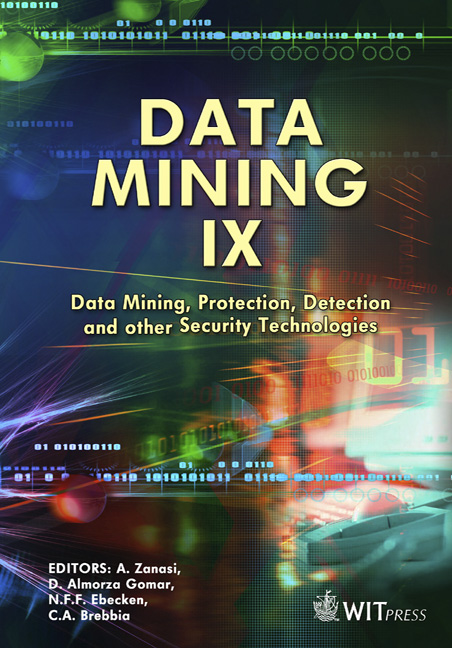A Data System For The Security And Tracking Of Goods Containers
Price
Free (open access)
Volume
40
Pages
9
Page Range
249 - 257
Published
2008
Size
340 kb
Paper DOI
10.2495/DATA080241
Copyright
WIT Press
Author(s)
P. J. Munday
Abstract
This paper discusses the need for security of goods in shipping containers against the threat of theft, smuggling and contamination. It shows the need to have integrity and tracking sensors within the container, and to regularly report status and location to control centres. This paper describes work done within the PASR2005 SECCONDD activity towards an international interface standard for secure container data. It discusses the types of communications required from the container’s sensor system, namely: a) long range reporting over the GSM cellular radio system – to be done periodically or when a significant event occurs, and b) short range reporting over a radio link in the 2.4GHz licence-free band. The paper outlines the types of data that need to be sent in the different cases, and discusses the recommended protocols for encoding, protection and communication of the data. These are based around standard protocols, e.g. Transport Layer Security and IEEE 802.15.4, but adapted where necessary to make transmission of the sensor data efficient, secure and reliable in the shipping container environment. There is a particular issue in a large port where there may be hundreds of shipping containers in radio range of an interrogator device, and where a special radio channel access protocol is required. The paper shows how the system can be implemented in a cost effective, low power device. The paper discusses how the data on location and security status of containers can be used by the relevant trade organisations and law enforcement agencies, e.g. for security risk assessment. Keywords: containers, security, tracking, authentication, protocol layers, radio channel access, public key infrastructure, risk assessment, tamper protection.
Keywords
containers, security, tracking, authentication, protocol layers, radio channel access, public key infrastructure, risk assessment, tamper protection.





